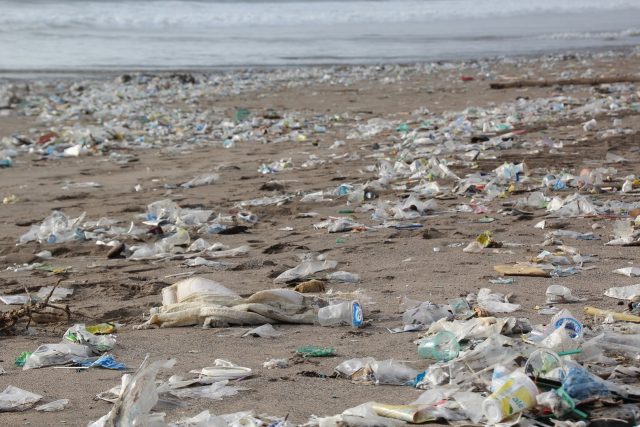According to a report from the Ocean Conservancy and the McKinsey Center for Business and Environment, five Asian countries are responsible for nearly 60 percent of the plastic waste leaking into the ocean. Four of those countries, Indonesia, the Philippines, Vietnam and Thailand, are located in Southeast Asia.
A 2015 paper published in the academic journal Science estimated the amount of plastic in the world’s oceans ranges from anywhere between 4.7 and 12.8 million metric tonnes. But these cold, hard numbers don’t reveal the true impact of leaking plastic waste has on the oceans.
Across Southeast Asia, marine animals continue to die after ingesting plastic waste. In Thailand, an estimated 300 marine animals each year are killed in Thai waters after ingesting plastic, according to respected local marine ecologist, Thon Thamrong-nawasawat. It is a similar story in Indonesia, the Philippines and Vietnam.
These tragic events have created greater awareness and caused both governments and the public take some action. But plastic remains pervasive in Southeast Asia. From the smallest transactions in convenience stores to massive packaging production, it’s impossible to avoid.
Many experts believe the most difficult challenge for developing countries when it comes to stopping plastic waster leakage is waste infrastructure. Unlike in Europe, where most countries have an extensive system for collection and sorting of plastic, Southeast Asia must invest in new technologies to improve waste management infrastructure.
This is especially true in the region’s rural areas where in most cases the collection of recycled materials is inefficient or non-existent. Collecting waste is nothing new in urbanized areas where plastics are picked out at various stages of the collection process. It’s a different story outside of the city.
Most plastic waste leakage does not enter the ocean through direct contact. Research from Eunomia, an independent environmental consultancy, found that 80 percent of all ocean plastic comes from land-based sources such as landfills.
There are numerous dumps sites in rural locations across Southeast Asia that are situated near rivers, tributaries, creeks and other water sources that eventually flow into the ocean. These facilities lack planning and infrastructure and are sometimes nothing more than a pile of trash. When floods or other natural disasters strike landfills, waste ends up in the water that eventually takes it to the ocean.
Stopping plastic waste leakage from landfills is a key to stopping plastics from entering the ocean. Improving existing waste management infrastructure is an important step in prevention, but it won’t help prevent plastic that currently sits in landfills from finding its way into the ocean.
Believe it or not, there is a way to recover some of the plastic currently settled in Southeast Asian landfills. What’s more, that unwanted plastic might have some value after all. In part two of our series on ocean plastics we look at how this material can be mined from landfills and used as energy.


































